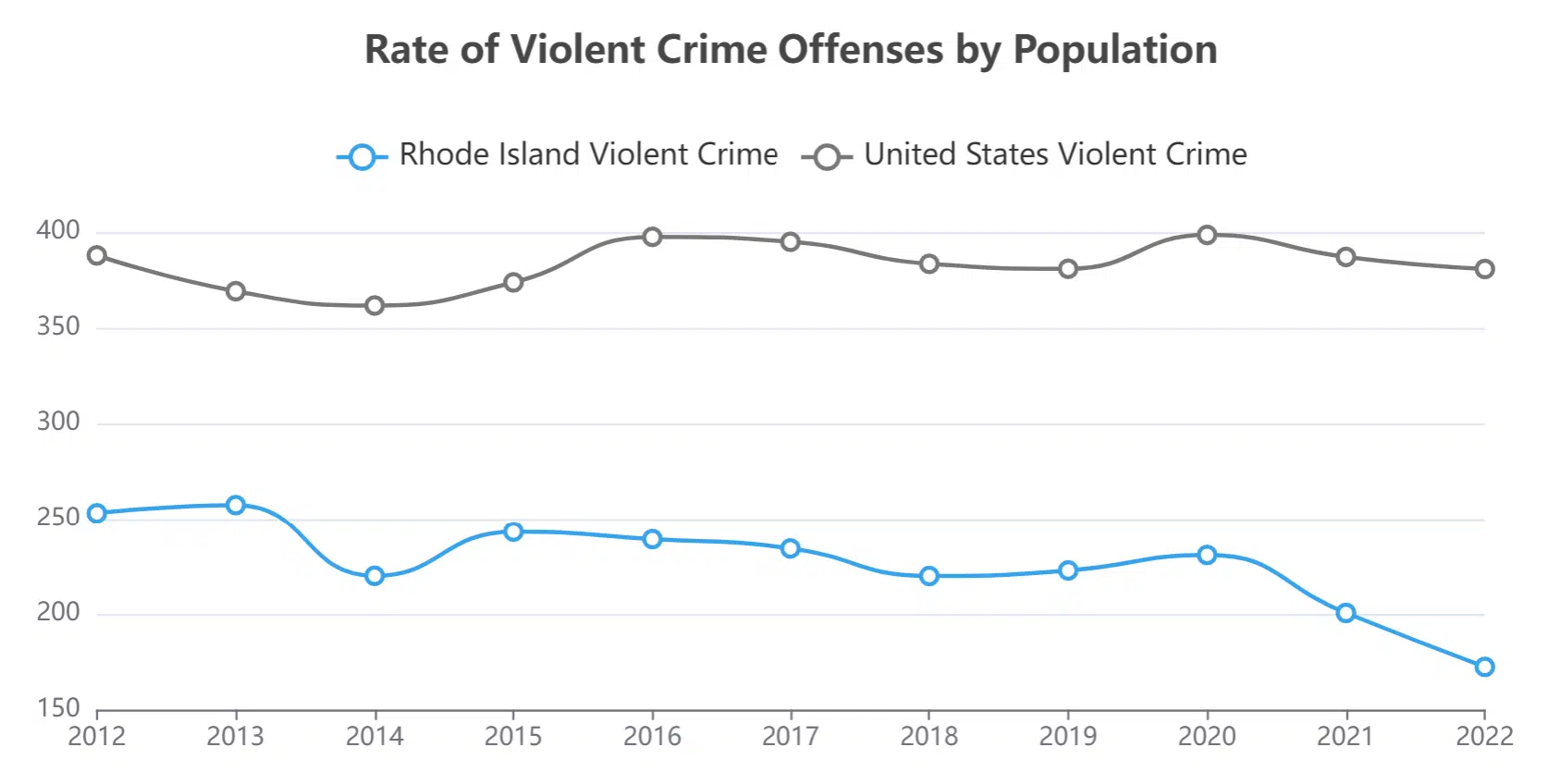New FBI report shows fear-mongering over crime doesn’t match reality
Despite ongoing claims of a nationwide “crime wave” from some politicians and media outlets, the latest FBI data released this week reveals a more nuanced picture – both violent and property crime rates continued to fall or hold steady in 2022.
The data simply does not support declarations of a crime crisis. But
truth often takes a backseat to political rhetoric in an election season.
A sober, thorough analysis of the facts shows violent crime, including homicide, robbery and assault, dropped 1.7% last year versus 2021. This extends an ongoing 30-year decline – today’s violent crime rate is less than half what it was in the early 1990s, a true watershed moment for public safety.
The homicide rate specifically
is down 6.1% in 2022 and plunged nearly 12% in major cities so far in 2023,
according to a New York Times analysis. This sharp drop contradicts predictions
of an endless “murder wave” and points to progress on curbing deadly violence
through targeted prevention and intervention efforts.
As for property crimes like burglary and theft, the rate held nearly steady last year after plunging during the pandemic. But it remains near historic lows, with 6.5 million property crimes in 2022 versus 7.4 million back in 2018 – a significant reduction.
Crime trends in Rhode Island reflect the national picture.
Violent crime ticked up during the COVID-19 pandemic but remains near 30-year lows, per state police data. The recent increase was driven by aggravated assaults, which tend to be non-fatal, while murder and rape declined. Property crime also rose during the pandemic but is down substantially over the past decade.
Critically,
while crime rates have fallen substantially over the past 30 years, police
“clearance rates” – the rate at which police solve reported crimes – remain
extremely low across all categories.
For
homicides, just 52% lead to an arrest and prosecution. That means nearly half
of all murders go unsolved, leaving dangerous killers on the loose. For rape,
the clearance rate is a woefully low 26%, meaning 3 out of 4 rapists face no
consequences. Nearly 80% of robberies and close to 60% of aggravated assaults
also go unsolved.
Clearance
rates for property crimes are even more anemic, in the teens or single digits.
According to the FBI data, roughly 9 out of 10 burglaries or auto thefts, and
nearly 9 in 10 larcenies, result in no arrest.
What
these abysmal clearance rates show is that even as crime declines, police
effectiveness in solving crimes and apprehending perpetrators remains stagnant
at best or deteriorating at worst. More officers and resources have not moved
the needle – clearance rates have been dismal for decades. The simple truth is
that after crimes occur, victims have depressingly low odds of seeing justice
done.
Meanwhile,
over $100 billion is spent annually on policing nationwide, with expanding
budgets nearly every year, especially in Rhode Island. Yet with violent crime
at historic lows, the return on this massive investment remains poor in terms
of identifying and charging criminals. Police seize on sporadic, temporary
crime spikes to demand more funding. But the data shows no correlation between
police budgets and public safety.
So
what is the path forward to build safer communities? Many experts point to new
approaches beyond traditional policing. Violence prevention programs, increased
mental health and drug treatment services, youth intervention initiatives,
anti-poverty and jobs programs have all shown promise.
But
promising community programs get only a fraction of public dollars compared to
police departments. And police themselves rarely implement creative solutions –
arrests and reactions still dominate operations. Until that mindset changes,
clearance rates are likely to stay low while victims wait for justice.
The
data doesn’t lie, political rhetoric around a new “crime wave” does not reflect
reality. Violent and property crime are in long-term declines, though some ups
and downs occur year-to-year. But police continue to struggle mightily to
actually solve crimes and take criminals off the streets. Doubling down on
failed strategies is not the answer.
Crime
is a complex societal issue, and overheated election year slogans do nothing to
make our communities safer. Steady, smart reforms and forward-thinking public
investments are the path forward. Fear-mongering may win votes, but the data
shows it simply does not match the declining crime rates America has
fortunately experienced over the past three decades.
You
can explore all of the data released by the FBI using the bureau’s Crime Data Explorer website.
